Brazilian Yellow Scorpion
- March 26, 2024
- 0 comment
The Brazilian Yellow Scorpion, scientifically known as Tityus serrulatus, is a fascinating yet potentially dangerous arachnid species found primarily in Brazil. True to its name, this scorpion species boasts a striking yellow coloration, serving as a warning sign of its venomous nature. Despite its relatively small size, typically measuring around 6-7 centimeters in length, the Brazilian Yellow Scorpion packs a powerful sting, making it a significant concern for human health, especially in urban areas where encounters are more common. These nocturnal predators possess a varied diet, preying on insects, spiders, and occasionally small vertebrates under the cover of darkness.
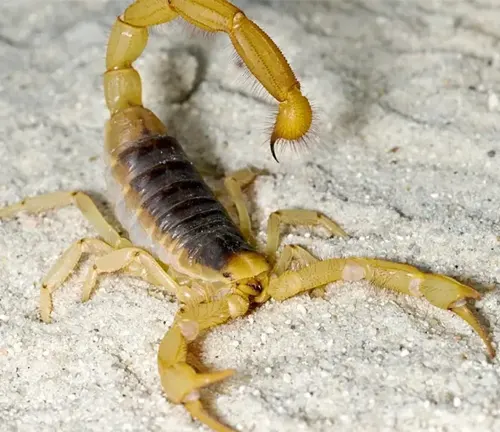
The venom of the Brazilian Yellow Scorpion is highly potent, containing neurotoxins that can cause severe symptoms in humans, ranging from intense pain and swelling to respiratory distress and paralysis. While fatalities from stings are rare with prompt medical treatment, the species is responsible for numerous hospitalizations each year, particularly among vulnerable populations. Efforts to understand its behavior, venom properties, and interactions with humans are ongoing, aiming to improve management strategies and mitigate risks associated with its presence.
Brazilian Yellow Scorpion Characteristics
| Specifications | Details |
|---|---|
| Scientific Name | Tityus serrulatus |
| Common Name | Brazilian Yellow Scorpion |
| Coloration | Vibrant yellow |
| Size | Approximately 6-7 centimeters in length |
| Habitat | Urban areas, forests, grasslands |
| Distribution | Primarily found in Brazil |
| Diet | Insects, spiders, small vertebrates |
| Venom Toxicity | Highly potent neurotoxins |
| Venom Effects | Intense pain, swelling, respiratory distress, paralysis |
| Medical Importance | Significant health concern, particularly in urban areas |
| Treatment | Antivenom therapy, supportive care |
| Mortality Rate | Low, but can be fatal without prompt medical intervention |
| Behavior | Nocturnal predator, defensive stinger |
| Conservation Status | Not evaluated |
| Research Efforts | Ongoing studies on behavior, venom composition, and medical treatment effectiveness |
The Brazilian Yellow Scorpion, scientifically known as Tityus serrulatus, is a venomous arachnid species found primarily in Brazil. It belongs to the family Buthidae, which includes some of the most venomous scorpions worldwide. Despite its small size, this species poses a significant threat to humans due to its potent venom.
Physical Characteristics
Coloration
The Brazilian Yellow Scorpion derives its name from its vibrant yellow coloration. This striking hue serves as a warning sign to potential predators and helps the scorpion stand out against its surroundings. While the overall body color is predominantly yellow, there may be slight variations in shade, with some individuals exhibiting a deeper or brighter yellow tint. Additionally, Brazilian Yellow Scorpions may have contrasting markings or patterns on their exoskeleton, adding to their visual appeal and distinctiveness.
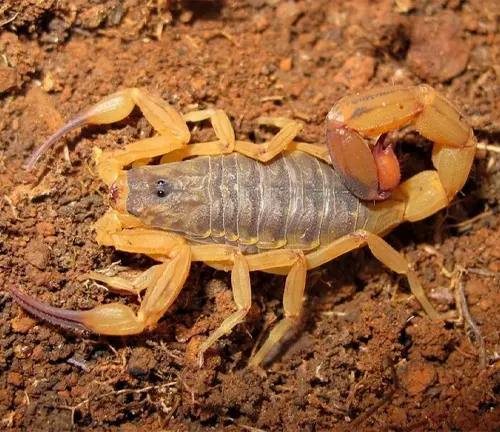
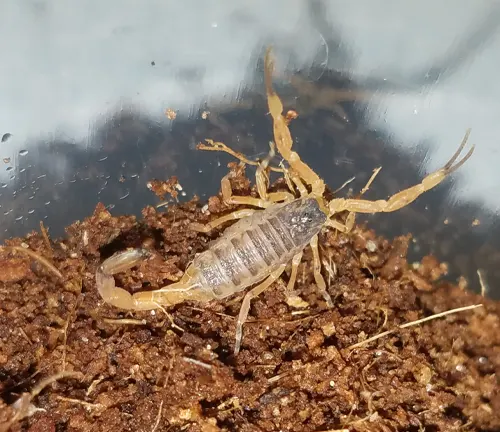
Size
On average, Brazilian Yellow Scorpions measure around 6-7 centimeters (approximately 2.5-3 inches) in length, with females typically being slightly larger than males. Despite their relatively small size compared to other scorpion species, Brazilian Yellow Scorpions possess a potent venom that can cause significant health issues in humans if they are stung. Their compact size enables them to navigate various environments with ease, from urban areas to natural habitats, where they hunt for prey and seek shelter.
Habitat and Distribution
Habitat
Brazilian Yellow Scorpions are adaptable arachnids that inhabit a wide range of environments. They are commonly found in both natural and human-altered landscapes, including forests, grasslands, urban areas, and agricultural settings. Within these habitats, they seek out sheltered locations such as under rocks, logs, debris, and within crevices or burrows. Brazilian Yellow Scorpions are well-adapted to warm and humid climates, thriving in regions with consistent temperatures and adequate moisture levels.
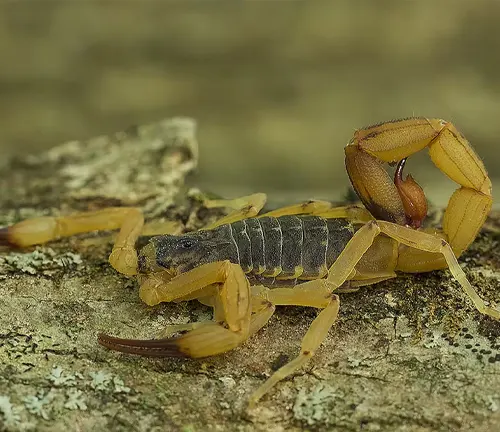
Distribution
The primary range of the Brazilian Yellow Scorpion is concentrated in Brazil, particularly in the central and southeastern regions of the country. However, they can also be found in neighboring countries such as Argentina, Paraguay, and Uruguay, albeit in smaller numbers. Within Brazil, they are widespread and can be encountered in various states, including São Paulo, Rio de Janeiro, Minas Gerais, and Bahia. Their distribution may be influenced by factors such as habitat availability, temperature, humidity, and human activity. Despite their preference for warmer climates, Brazilian Yellow Scorpions have demonstrated a remarkable ability to adapt to diverse environments, making them a notable presence across their range.
Behavior and Diet
Behavior
Brazilian Yellow Scorpions are nocturnal creatures, meaning they are most active during the night. During the daytime, they seek shelter in protected areas to avoid exposure to harsh sunlight and potential predators. Under the cover of darkness, they emerge from their hiding spots to hunt for prey and engage in other activities such as mating and territorial behavior. Despite their fearsome reputation, Brazilian Yellow Scorpions are not inherently aggressive and typically only sting when provoked or threatened. They rely on their keen sense of touch and vibration detection to locate prey and navigate their environment. When confronted with a potential threat, they may adopt defensive postures or use their venomous sting as a means of self-defense.


Diet
Brazilian Yellow Scorpions are carnivorous predators that feed on a variety of prey items. Their diet primarily consists of insects such as cockroaches, crickets, beetles, and spiders. Additionally, they may consume small vertebrates such as lizards and rodents if the opportunity arises. Brazilian Yellow Scorpions are adept hunters, using their specialized sensory organs and venomous sting to subdue and immobilize their prey. They employ ambush tactics to capture unsuspecting prey, relying on stealth and patience to secure their next meal. As efficient predators, Brazilian Yellow Scorpions play a crucial role in regulating insect populations and maintaining ecological balance within their habitats.
Venom and Sting
Toxicity Levels
The venom of the Brazilian Yellow Scorpion (Tityus serrulatus) is highly potent and contains a complex mixture of neurotoxins. These neurotoxins target the nervous system of their prey or potential threats, disrupting normal neurotransmission and causing a range of physiological effects. The toxicity of the venom can vary depending on factors such as the size and age of the scorpion, as well as the amount of venom injected during a sting. While Brazilian Yellow Scorpions are not among the most venomous scorpion species globally, their venom is still considered dangerous to humans, particularly vulnerable populations such as children, the elderly, and individuals with compromised immune systems.
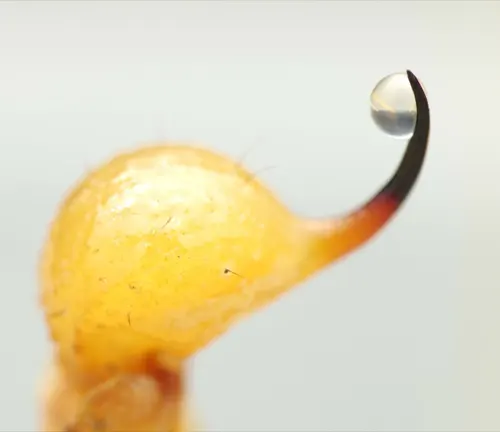
Symptoms of Envenomation
Envenomation by a Brazilian Yellow Scorpion can result in a variety of symptoms, ranging from mild to severe, depending on factors such as the individual’s sensitivity to the venom and the location of the sting. Common symptoms of envenomation may include:
- Intense pain and burning sensation at the site of the sting.
- Swelling and redness around the sting area.
- Numbness or tingling sensation in the affected limb.
- Muscle spasms or cramping, particularly in the limbs and abdomen.
- Difficulty breathing or respiratory distress.
- Increased heart rate and blood pressure.
- Nausea, vomiting, and abdominal pain.
- Profuse sweating and salivation.
- In severe cases, envenomation may lead to life-threatening complications such as respiratory failure, cardiac arrest, or neurological damage.
Medical Importance
Antivenom Treatment
Antivenom therapy is the primary treatment for severe envenomation caused by the Brazilian Yellow Scorpion (Tityus serrulatus). Antivenom, also known as antivenin or antivenom serum, is a specific antidote that works by neutralizing the effects of the scorpion venom in the body. It is typically administered intravenously and contains antibodies that bind to the venom toxins, preventing them from causing further harm. Antivenom treatment aims to alleviate symptoms, reduce the severity of complications, and improve the patient’s overall prognosis.
However, the availability of antivenom may vary depending on factors such as geographical location, healthcare infrastructure, and medical resources. Prompt administration of antivenom is crucial for maximizing its effectiveness and minimizing the risk of serious complications associated with envenomation.
Mortality Rates
While fatalities from Brazilian Yellow Scorpion stings are relatively rare, particularly with prompt medical treatment, the species is still responsible for a significant number of hospitalizations and medical emergencies each year. Mortality rates associated with envenomation by the Brazilian Yellow Scorpion may vary depending on factors such as the age and health status of the victim, the amount of venom injected, and the timely access to appropriate medical care. Vulnerable populations, such as children, the elderly, and individuals with pre-existing medical conditions, are at higher risk of developing severe complications from scorpion stings.
Despite advances in medical treatment and the availability of antivenom, efforts to improve public awareness, prevention strategies, and access to healthcare resources remain essential for reducing mortality rates associated with envenomation by the Brazilian Yellow Scorpion.
Interactions with Humans
Encounters
Encounters with Brazilian Yellow Scorpions often occur in urban and suburban environments, where human activities intersect with their natural habitat. These encounters may occur indoors, particularly in areas such as homes, garages, sheds, and gardens, where scorpions seek shelter and prey. Additionally, outdoor encounters may occur in places with suitable hiding spots, such as under rocks, logs, debris, and in vegetation. While Brazilian Yellow Scorpions generally prefer to avoid confrontation with humans, accidental encounters may occur, especially during nighttime when they are most active.
Prevention
To minimize the risk of encounters with Brazilian Yellow Scorpions and reduce the likelihood of stings, several preventive measures can be implemented:
- Inspect and Seal Entry Points: Regularly inspect and seal cracks, gaps, and openings in doors, windows, walls, and foundations to prevent scorpions from entering indoor spaces.
- Remove Clutter: Declutter indoor and outdoor areas by removing piles of debris, woodpiles, rocks, and other potential hiding spots that may attract scorpions.
- Keep Surroundings Clean: Maintain cleanliness in and around the home by regularly cleaning and decluttering living spaces, including storage areas, basements, and attics.
- Use Protective Gear: When working outdoors or in areas where scorpions may be present, wear protective clothing such as gloves, long-sleeved shirts, and closed-toe shoes to reduce the risk of accidental stings.
- Shake Out Clothing and Shoes: Before putting on clothing, shoes, or accessories that have been left unattended, shake them out thoroughly to dislodge any hidden scorpions or other pests.
- Install Pest Control Measures: Implement pest control measures such as sealing cracks, using
insecticide sprays or baits, and setting up sticky traps to deter and capture scorpions and other pests. - Educate Family Members: Educate household members, especially children, about the potential dangers of scorpions and teach them to identify and avoid these creatures to prevent accidental stings.
Research and Conservation Efforts
Research Efforts
Ongoing research on the Brazilian Yellow Scorpion (Tityus serrulatus) focuses on various aspects of its biology, behavior, venom composition, medical treatment, and interactions with humans and the environment. Scientists and researchers conduct studies to better understand the ecological role of scorpions, their habitat preferences, and their interactions with other organisms within their ecosystems.
Additionally, research efforts aim to elucidate the molecular mechanisms of scorpion venom, identify potential therapeutic applications, and develop more effective antivenom treatments for scorpion envenomation. Collaborative research initiatives involving universities, research institutions, and government agencies contribute to expanding our knowledge of Brazilian Yellow Scorpions and improving strategies for managing and mitigating risks associated with their presence.
Conservation Efforts
While Brazilian Yellow Scorpions are not typically considered endangered species, conservation efforts may still be implemented to protect their natural habitats and ensure their long-term survival. Conservation measures may include habitat preservation, restoration, and management to safeguard critical habitats and maintain biodiversity. Public awareness campaigns and educational programs may also be developed to raise awareness about the importance of scorpions in ecosystems and promote coexistence with these creatures. Furthermore, efforts to regulate the trade and collection of scorpions for commercial purposes, such as the pet trade or biomedical research, may help prevent overexploitation and depletion of wild populations.
By integrating conservation principles into land use planning, environmental policy, and community engagement initiatives, stakeholders can work together to conserve the Brazilian Yellow Scorpion and its habitat for future generations.
Common Misconceptions
Aggressiveness
One common misconception about Brazilian Yellow Scorpions is that they are inherently aggressive and actively seek out opportunities to sting humans. In reality, these scorpions typically avoid confrontation and only sting in self-defense when they feel threatened or cornered. Most encounters with humans occur accidentally, and scorpions prefer to retreat rather than engage in aggressive behavior.
Lethality
Another misconception is that all scorpion stings, including those from the Brazilian Yellow Scorpion, are invariably lethal or result in severe health complications. While the venom of Brazilian Yellow Scorpions is potent and can cause significant discomfort, fatalities from stings are relatively rare, particularly with prompt medical treatment. Most stings result in mild to moderate symptoms that can be effectively managed with appropriate medical care.
Indoor Exclusivity
Some people believe that Brazilian Yellow Scorpions are exclusively indoor pests and pose a significant threat to human health and safety within residential buildings. While they may be encountered indoors, particularly in urban areas, Brazilian Yellow Scorpions also inhabit various outdoor environments, including forests, grasslands, and agricultural areas. Implementing preventive measures and maintaining vigilance both indoors and outdoors can help minimize the risk of encounters with these scorpions.
Unprovoked Attacks
There is a misconception that Brazilian Yellow Scorpions will sting humans without provocation or warning. In reality, scorpions generally sting as a last resort when they feel threatened or perceive imminent danger. Most stings occur when humans accidentally come into contact with scorpions or disturb their hiding spots, such as reaching into dark crevices or handling debris.
Disease Transmission
Some people mistakenly believe that Brazilian Yellow Scorpions transmit diseases to humans through their stings. While scorpion venom can cause severe symptoms and health complications, it is not known to transmit infectious diseases. Envenomation primarily affects the nervous system and musculoskeletal system, leading to symptoms such as pain, swelling, and muscle spasms, rather than infectious diseases.
Different Species
Tityus bahiensis
This species is commonly found in the Bahia region of Brazil. It is similar in appearance to the Brazilian Yellow Scorpion but may exhibit variations in coloration and venom potency.
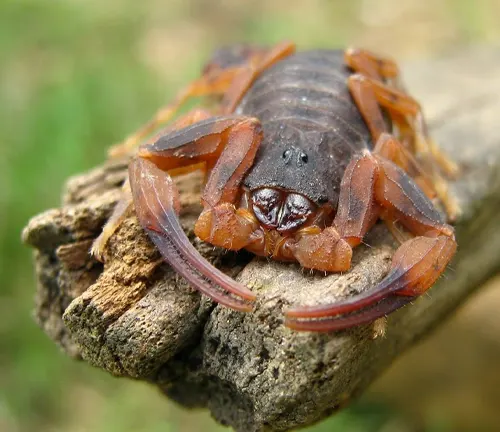
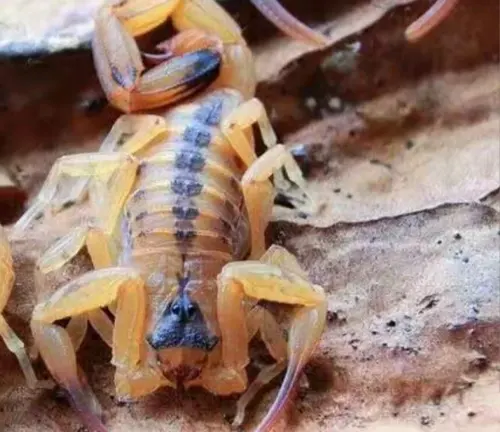
Tityus stigmurus
Also known as the Brazilian brown scorpion, this species is found in various regions of Brazil, particularly in northeastern states. It has a brownish coloration and is known for its aggressive behavior.
Tityus costatus
Found in the Amazon rainforest and other parts of northern Brazil, the Brazilian striped scorpion has distinctive longitudinal stripes on its exoskeleton. It prefers humid environments and is often found near water sources.
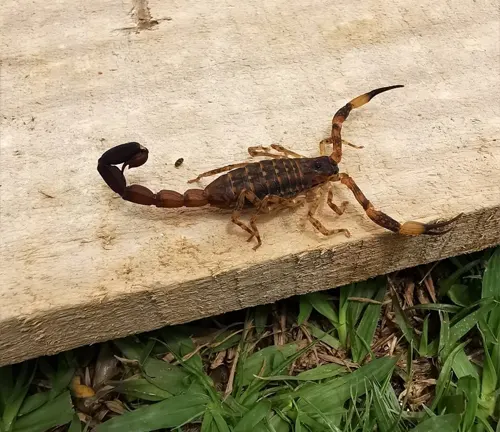
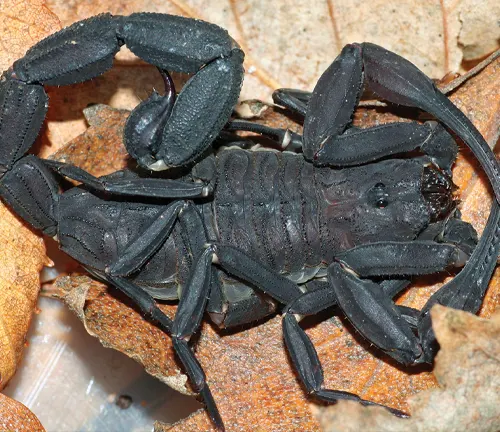
Tityus cambridgei
This species is endemic to Brazil and is primarily found in the southeastern region. It has a dark brown coloration and is known for its relatively mild venom compared to other scorpion species.
Tityus obscurus
Native to Brazil, Tityus obscurus is found in the Atlantic Forest biome. It has a dark coloration and is relatively small compared to other Tityus species.
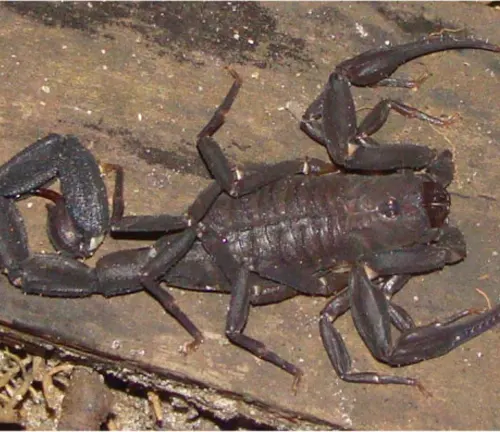

Tityus serrulatus
As mentioned earlier, this species, commonly known as the Brazilian Yellow Scorpion, is one of the most medically significant scorpions in Brazil. Its bright yellow coloration and potent venom make it a concern for public health.
Frequently Asked Questions (FAQs)
- Are Brazilian Yellow Scorpions aggressive?
While they may sting if provoked or threatened, Brazilian Yellow Scorpions typically avoid confrontation and only use their venom for self-defense. - How can I identify a Brazilian Yellow Scorpion?
Look for their distinctive bright yellow coloration and slender body shape, which helps distinguish them from other scorpion species. - What time of day are Brazilian Yellow Scorpions most active?
- These scorpions are nocturnal hunters, meaning they are most active during the night when they search for prey.
- Can Brazilian Yellow Scorpions climb walls or surfaces?
Yes, Brazilian Yellow Scorpions are adept climbers and can scale walls, trees, and other surfaces using their specialized claws and leg structures. - Do Brazilian Yellow Scorpions prefer indoor or outdoor environments?
While they can be found in both indoor and outdoor settings, Brazilian Yellow Scorpions are more commonly encountered indoors, particularly in warm, urban areas. - How long do Brazilian Yellow Scorpions live?
On average, Brazilian Yellow Scorpions can live for several years, with females typically having longer lifespans than males. - Can Brazilian Yellow Scorpions be kept as pets?
While some people may keep them as exotic pets, it’s essential to exercise caution due to their venomous nature and potential health risks. - Are Brazilian Yellow Scorpions attracted to certain types of environments?
Brazilian Yellow Scorpions prefer warm, humid environments with ample hiding spots, such as cluttered areas or underneath rocks and debris. - How often do Brazilian Yellow Scorpions reproduce?
Female Brazilian Yellow Scorpions typically give birth to live young multiple times throughout the year, with gestation periods lasting several months. - What is the best course of action if I find a Brazilian Yellow Scorpion in my home?
Safely capture or remove the scorpion using specialized tools or contact a professional pest control service to address the infestation safely and effectively. - Are Brazilian Yellow Scorpions found only in Brazil?
While they are most commonly associated with Brazil, Brazilian Yellow Scorpions can also be found in neighboring countries such as Argentina and Paraguay, albeit in smaller numbers. - How can I differentiate between a Brazilian Yellow Scorpion and other scorpion species found in Brazil?
Look for specific characteristics such as coloration, size, and habitat preferences, and consult with experts or local authorities for accurate identification if needed.





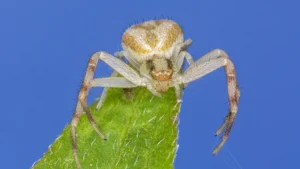


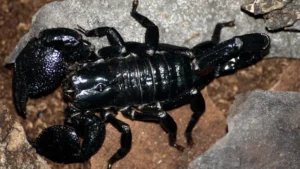

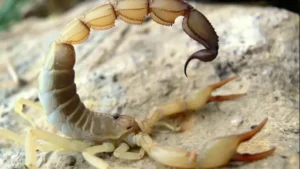


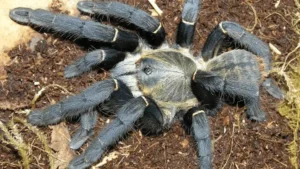
Leave your comment